We're three days away from the official start of NFL free agency, and just a day away from the start of the "legal tampering period." Meanwhile, all eyes have been on the combine in Indianapolis the past few days and fans are excited to see what their favorite teams will do in the draft in April. So what is the biggest need for all 32 NFL teams? Football Outsiders analyzes the biggest hole on each team's roster as we enter the deal-making portion of the NFL calendar.
Some of the write-ups refer to Football Outsiders' DVOA (defense-adjusted value over average) metric, which takes every play during the season and compares it to a baseline adjusted for situation and opponent. It is explained further here.
AFC East | AFC North| AFC South | AFC West
NFC East | NFC North | NFC South | NFC West
AFC EAST
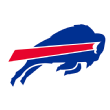
Buffalo Bills
Wide receiver
Regardless of whether Buffalo hangs onto Tyrod Taylor, its quarterback would surely appreciate someone to throw to in 2017. Sammy Watkins had only 28 receptions in a disappointing, injury-plagued 2016, but that's still more than the combined career total (17) of all the other wide receivers currently under contract.
The Bills might consider retaining free agent Robert Woods, but they'll need help at the position regardless. Since trading up to take Watkins in 2014, Buffalo has stayed away from adding at the position, spending two late-round picks on WRs and avoiding anything other than long-shot Percy Harvin-types in free agency. The ground-bound offense Buffalo has relied on seems shakier with new offensive coordinator Rick Dennison's zone-blocking scheme, a drastic departure from the gap-based scheme that suited LeSean McCoy so well. This is especially true if the Bills split with Taylor.
So Buffalo will need more credibility from its passing options to offset its likely rushing regression. Even if Watkins stays healthy -- no lock with recurring foot issues forcing him to miss 11 games the past two seasons -- the Bills need multiple additions around him to help out whomever ends up under center. -- Aaron Schatz
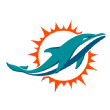
Miami Dolphins
Cornerback depth
Despite inconsistency and injury, this unit managed to contain the best receiving options of opposing offenses in 2016. The Dolphins ranked fourth in defensive DVOA against both No. 1 and No. 2 receivers. However, they canceled out much of that success by ranking 31st against all other wide receivers, with quarterbacks repeatedly picking on Miami's inexperienced depth.
Byron Maxwell quietly had a decent rebound season after his disastrous year in Philly, improving from 62nd to 14th in success rate, according to Sports Info Solutions charting. But the callow trio of Xavien Howard, Bobby McCain and Tony Lippett all struggled when called upon. When Maxwell went down in Week 15 because of an ankle injury, the Dolphins were exposed. Miami allowed only four 100-yard receivers all year with Maxwell in the lineup, but the opposing No. 1 receiver in each of its last three games -- Sammy Watkins, Julian Edelman and Antonio Brown -- went over the century mark with no Maxwell.
The Dolphins have high expectations for the 2016 second-rounder Howard, who was a Week 1 rookie starter despite missing all of training camp because of a knee injury. But McCain and Lippett were both developmental players who haven't shown much entering their third seasons. Even if Maxwell stays healthy and Howard takes a step forward, Miami needs to ensure other teams' complementary options don't continue to toast them in 2017. -- Aaron Schatz
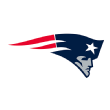
New England Patriots
Edge rusher
Many will laud last spring's Chandler Jones trade as the latest example of Bill Belichick's managerial acumen, cashing in an asset for long-term value while also winning in the short term. New England's season ultimately turned out just fine without Jones, but it would be wrong to claim that the Patriots didn't miss their best pass-rusher.
Pick your metric. New England piled up 49 sacks and finished second in adjusted sack rate in 2015, but had only 34 sacks and plummeted to 26th in ASR last season. ESPN Stats & Information ranked the Patriots 18th in pressure rate and Chris Long was the only New England defender to earn at least 20 pressures according to Sports Info Solutions charting. Long has already declared his intention to leave in free agency. Jabaal Sheard also seems likely to price himself out of Foxborough given that the franchise tag took a trio of top pass-rushers off the market.
Belichick has recently favored players capable of rushing outside or inside on obvious passing downs, which minimizes the need for a traditional 3-technique defensive tackle. Trey Flowers showed some promise last season in this role, but he barely has played 500 career snaps and might be even more useful as an inside pass-rusher. Apart from Flowers, the Pats have 33-year-old Rob Ninkovich entering the final year of his deal (and perhaps career) in 2017, and not much else. Expect New England to throw a few darts at players who could fill Long's situational role, both in the draft and free agency. -- Aaron Schatz
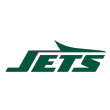
New York Jets
Cornerback
What do you get for the team that needs everything? According to DVOA, last season's Jets fielded the franchise's worst pass defense since the start of our advanced stats in 1988. Injuries, coupled with Darrelle Revis' demise, were at the heart of the 31st-ranked pass defense. New York did not rank better than 16th against any type of receiver, yet fielded the league's second-most expensive secondary by cap hit last season, per Spotrac.
The Jets should be able to find reinforcements in a deep draft for defensive backs, important for a team that lacks young talent on the back end. Former first-round safety Calvin Pryor has stagnated and probably won't have his fifth-year option picked up, and mid-rounders Juston Burris and Dexter McDougle haven't proved anything at cornerback. The defense might benefit if it can find another perimeter corner to push Buster Skrine inside to his natural slot corner role, but this is a deck-chairs-on-the-Titanic type of arrangement. -- Aaron Schatz
AFC NORTH
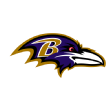
Baltimore Ravens
No. 1 wide receiver
There has been something deeply odd about the Ravens' offense since Gary Kubiak left for the Broncos. Joe Flacco is a walking Elite meme at this point, replete with a terrible contract, but he shouldn't be holding back the Ravens. The offensive line seems solid, especially up the middle. Kenneth Dixon's emergence late last season, combined with Terrance West's resurrection, set them up pretty well at running back. It's an offense that is somehow less than the sum of its parts.
With Steve Smith retired, the Ravens enter 2017 with Mike Wallace and Breshad Perriman atop the depth chart. Being part of a head-scratching offense is a tradition for Wallace, who has spent his days since Pittsburgh in Minnesota and Miami piling up empty stats as a high-volume target. Perriman missed his entire rookie season, and though he played in 2016 and showed flashes of the talent that made him a first-round pick, he's not exactly someone to be relied upon at this point. Kamar Aiken will be a free agent, and the rest of the receivers on the roster might still be better known to draft obsessives than to their own coaches.
The Ravens are probably too capped out to make a run at someone like Alshon Jeffery, but it would definitely make sense for them to consider wide receiver early in this year's draft -- perhaps even in the first round if someone like Eastern Michigan's Corey Davis is still on the board when the Ravens select at 16. -- Rivers McCown
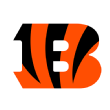
Cincinnati Bengals
Defensive tackle
The Bengals don't really have gaping holes, but they've lost a lot of depth over the past couple of seasons. The offense with Andy Dalton was fine, but without Marvin Jones and Mohamed Sanu it wasn't the embarrassment of riches it had been in the past. The secondary is OK, but with Leon Hall moving on, it wasn't as good as it had been a few years ago. The running game was acceptable, but Jeremy Hill is coming off his worst season and Giovani Bernard has a torn ACL. The offensive line isn't what it was a couple of years ago. And so on.
However, stuffing the run was a problem for the Bengals even in their best years. The Bengals were 25th in adjusted line yards up the middle in 2016, and NT Domata Peko's play was one of the root causes of this. (Rey Maualuga deserves some blame too.) The Bengals don't have a bad team, but without the same star power or depth they had earlier in the decade, they can't afford to carry holes on their roster. -- Rivers McCown
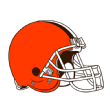
Cleveland Browns
Quarterback
You knew that, right? Everyone knows that. After years of talk about Josh McCown's great clubhouse presence, the Browns released the veteran because he's not actually a very good quarterback. Robert Griffin is on the roster with an $8.7 million cap hit, but the number of believers out there is dwindling. And Cody Kessler showed flashes of competent backup play as a rookie in 2016 but is nobody's long-term solution. Whether it's the free-agent market, a trade for someone like Jimmy Garoppolo, or the draft (more likely with the No. 12 pick than the No. 1), the Browns need a quarterback or two. -- Rivers McCown
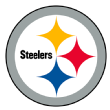
Pittsburgh Steelers
No. 2/3 wide receiver
Antonio Brown is now the highest-paid wide receiver in the game, but who plays across from him? The Steelers had hoped to have Martavis Bryant around to terrify their opponents for years to come, but his substance abuse violation and punishment throws his likelihood of returning to the field into the hands of commissioner Roger Goodell. At the combine in Indianapolis, GM Kevin Colbert was talking about Bryant in the past tense.
In Bryant's absence last season, the Steelers intermittently got great games from undrafted free agent Eli Rogers and (when healthy) tight end Ladarius Green. But they did not find a consistent performer. Sammie Coates, a 2015 third-round pick, struggled to catch deep balls. Cobi Hamilton and Darrius Heyward-Bey are options in run-heavy game scripts, but the Steelers would like to get more at this position. Pittsburgh could be proactive here, using another high-round pick or bringing in someone like Kenny Stills to try to help Ben Roethlisberger's deep strikes. -- Rivers McCown
AFC SOUTH
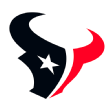
Houston Texans
Quarterback
Brock Osweiler ranked 22nd among quarterbacks last season with a 55.3 QBR, surprisingly high in part thanks to a bit of rushing value. He ranked even worse using Football Outsiders' passing DVOA, finishing with the second-worst figure in the league among qualifying passers, ahead of only Jared Goff. Unfortunately, Osweiler's contract means his roster spot is guaranteed for 2017, so the Texans cannot move on from him the way they moved on from Ryan Fitzpatrick and Brian Hoyer. Their options are limited.
They could give more reps to Tom Savage, who looked better than Osweiler in a small sample size last year (minus-5.1 percent DVOA and 66.3 QBR on 78 attempts), but that would be no more than a lottery ticket. They could spend a high pick on a quarterback, but with so many prospects coming out with limited experience, being stuck with Osweiler might be a good thing in comparison. They could go for broke and try to sign Tony Romo if (when?) Dallas releases him. Or they could punt as they did in 2015 when they brought in another obvious non-answer in Hoyer. Not many good choices. -- Thomas Gower
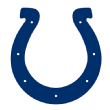
Indianapolis Colts
Edge rusher
Creating more pressure on the QB is a must for Indianapolis. The Colts' No. 13 ranking in adjusted sack rate is misleading: Their 21.5 percent pressure rate finished 31st overall last season, according to ESPN Stats & Information. As is stands now, Akeem Ayers and Josh McNary are the Colts' starting outside linebackers. That cannot be the case come in Week 1. The best available pass-rushers all got the franchise tag, but new general manager Chris Ballard might have no choice but to dive into the rest of that market (Nick Perry or Jabaal Sheard, perhaps?), and target a few players in the 2017 draft's deep class of edge rushers. -- Thomas Gower
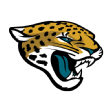
Jacksonville Jaguars
Edge rusher
Jacksonville's pass rush was part of its general defensive improvement last season, as the Jaguars finished 17th in adjusted sack rate. But two years into Dante Fowler Jr.'s career, after an injury wiped out Year 1 and he had 4.0 sacks last season, the 2015 No. 3 overall pick is looking more like the disappointment our SackSEER system projected and less like the sort of transformational talent you hope to find at the top of the draft. Yannick Ngakoue, a 2016 third-rounder, tallied a respectable 8.0 sacks to lead the team, but overall Jacksonville needs more help.
The biggest question is where to find that help. Texas A&M DE Myles Garrett probably will be gone before the Jaguars pick fourth overall. Unless you consider Jonathan Allen an edge rusher or love Solomon Thomas, there might not be one worthy of taking at that spot. Yet there also might be a run on the position late in the first round, leaving nobody for Jacksonville at the top of the second round. What Jacksonville could really use is a veteran, but Indianapolis and plenty of other teams have the same sort of need and the free-agent crop isn't particularly strong. Missing out on Olivier Vernon last season hurt a lot. -- Thomas Gower
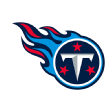
Tennessee Titans
Cornerback
The Titans went into 2016 with better cornerback depth than they had seen in seasons. That's less of a compliment to GM Jon Robinson and more of an indictment of their past secondaries. The results, again, were not good in 2017. The Titans finished 26th in pass defense DVOA and were one of the two worst teams against opponents' No. 2 wide receivers for the third straight season.
Personnel-wise, they needed more answers than they had. Starting corner Perrish Cox was cut during the season but still led the team in interceptions and was the only corner with good ball skills. Jason McCourty lacks lateral quickness. Brice McCain should be limited to the slot. Fifth-round rookie LeShaun Sims started late in the season. Valentino Blake (formerly known as Antwon) should not be more than your fourth or fifth corner. Defensive coordinator Dick LeBeau playing much more man coverage than he had historically did not help matters much.
The solution is simple: The Titans need to throw resources at the position, especially if they are going to continue to play so much man coverage. They have the cap room to sign A.J. Bouye or Logan Ryan, a player Robinson scouted for the Patriots. If the Titans miss out on Bouye, it would make sense to consider a premium corner prospect like Marshon Lattimore with the No. 5 overall pick. -- Thomas Gower
AFC WEST
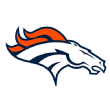
Denver Broncos
Offensive line
You can argue that Denver's biggest weaknesses are in the trenches on both sides of the ball, but we'll focus on the all-important offensive line. The Broncos managed to win Super Bowl 50 with a pretty bad line, and offseason tweaks did not help matters in 2016. Denver ranked 18th in adjusted line yards, and only 29th in converting short-yardage runs. This was never the running game we expected to see under head coach Gary Kubiak while he was in Denver.
The Broncos will still want to keep a running identity under new head coach Vance Joseph, but more changes are coming up front. The team declined to pick up left tackle Russell Okung's option, making him a free agent. If Okung doesn't return to Denver, Ty Sambrailo will be in the mix to take over at left tackle again. He leads a pretty uninspiring group of starters: left guard Max Garcia, center Matt Paradis, right guard Michael Schofield and right tackle Donald Stephenson. Denver could really use some draft capital to rebuild this line, especially if a veteran quarterback in need of some protection (such as Tony Romo, perhaps?) is going to end up taking over in 2017. -- Scott Kacsmar
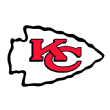
Kansas City Chiefs
Inside linebacker
Derrick Johnson has been a rock at inside linebacker for the Chiefs since he was a first-round pick in 2005, but he is going on 35 and ruptured his Achilles last season. Now is the time to look for a replacement in a 3-4 defense that could really use a smart, consistent playmaker in the middle. The Chiefs have some pretty marginal players in that position now, including Ramik Wilson, D.J. Alexander, Justin March-Lillard and impending free agent Josh Mauga.
This is not a position where the Chiefs should have to use a very high draft pick, but that is certainly on the table as the team does not have a glaring need in the first round this year. Strengthening the middle of the defense, adding depth at running back or wide receiver, or acquiring a quarterback to push Alex Smith are all possibilities when the Chiefs pick at No. 27 in the first round. -- Scott Kacsmar
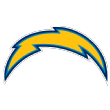
Los Angeles Chargers
Offensive line
The offensive line has been an issue for the Chargers for several seasons now. Left tackle King Dunlap has missed 13 games in the past two seasons, and right tackle Joe Barksdale was merely a stopgap solution. Left guard Orlando Franklin has not been the free-agent hit the team hoped for when signing him from Denver in 2015. Center Matt Slauson is not quite Nick Hardwick, but he is serviceable enough. The only starter that this team has actually drafted is D.J. Fluker, but the 2013 first-round pick was demoted to right guard and has continued to disappoint. It was surprising to see the Chargers pick up his fifth-year option, paying him $8.8 million this season.
Between Fluker's salary and Franklin's cap hit of $7.8 million, it seems very unlikely that the Chargers will opt for a higher-priced free agent such as Green Bay guard T.J. Lang. However, the draft will certainly be an option for the Chargers to start retooling this unit with youth that can develop under new head coach Anthony Lynn's staff. -- Scott Kacsmar
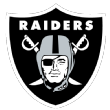
Oakland Raiders
Cornerback
The Raiders concentrated on defense in free agency last year, but veterans did not quite jell into a competent unit for Jack Del Rio. Led by All-Pro Khalil Mack, the defensive line is largely a collection of recently drafted talent, and the linebackers saw a boost from the addition of Seattle's Bruce Irvin last year. His 7.0 sacks were second on the team to Mack's 11.0. The Raiders solidified the safety position by signing Reggie Nelson and drafting Karl Joseph in the first round last offseason, but the cornerbacks remain an issue for a secondary that finished 25th against the pass.
Sean Smith was one of the big free-agent prizes last year, but after coming over from rival Kansas City, Smith struggled in his first run with Oakland. According to Sports Info Solutions charting, Smith finished 80th in yards per pass allowed (10.0) and 46th in success rate (52.0 percent) among qualified cornerbacks. David Amerson had his own share of problems, finishing 60th in yards per pass allowed (8.0) and 56th in success rate (51.0 percent). Former first-round pick D.J. Hayden led the team with 12 penalties in 2016 and is unlikely to return this season. Oakland could always give a veteran like Darrelle Revis a chance, or just stick to the draft to bolster the position. Before Hayden in 2013, the Raiders had not used a first-round pick on a cornerback since Fabian Washington in 2005. He went 23rd overall, also known as "one pick before Aaron Rodgers." Oakland has the 24th selection in the first round this year. -- Scott Kacsmar
NFC EAST
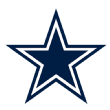
Dallas Cowboys
Defensive back
As great as the Cowboys were on offense last season, the defense was mediocre (18th in DVOA against the pass, eighth against the run), and is likely to see a major talent drain in its backfield. Seven Dallas defensive backs played at least 400 defensive snaps last year, and four of them -- cornerbacks Brandon Carr and Morris Claiborne, and safeties Barry Church and J.J. Wilcox -- are about to hit unrestricted free agency. Carr, who has never missed a start in his nine-year career, is probably the biggest loss. Still, he turns 31 in May, and his charting numbers (via Sports Info Solutions) have been mediocre. Out of 87 qualifying cornerbacks last season, he ranked 45th with 7.1 yards allowed per pass, and 61st with a 49 percent success rate. The year before, he ranked 56th and 65th in the same categories. As for the others: Church has never been more than an average safety, Wilcox started only four of 13 games last season, and Claiborne has missed as many games as he has played in the past four seasons.
How might Dallas replace those losses? It will likely have to turn to the draft. According to OverTheCap.com, the Cowboys have a league-low $3.3 million in cap room, and even jettisoning Tony Romo would leave them in the bottom five. That means the Cowboys will need a lot of help in the draft, and that's going to be tricky. They don't pick until No. 28, and they don't have a fifth-rounder (though they do have two picks in the seventh round). A Romo trade probably would net a draft pick in return, but if they also could pick up a veteran defensive back in the swap, that could only help. -- Vincent Verhei

New York Giants
Running back
The offensive line stats page at FootballOutsiders.com includes two stats that attempt to measure what running backs do independent of their offensive lines. The first, second-level yards, measures only those yards running backs gain 5 to 10 yards beyond the line of scrimmage. The second, open-field yards, only counts yards gained 11 or more yards downfield. In 2016, the Giants ranked 29th in both categories. They need to find a way to get more big plays in the running game. Overall, New York ranked 26th in rushing DVOA. Neither Rashad Jennings (who was released earlier this month) nor Paul Perkins ranked in the top 20 in rushing DYAR or the top 30 in receiving DYAR for running backs.
Barring a major trade up the board, the Giants will miss out on Leonard Fournette and Dalvin Cook, who will both be long gone by the time New York picks at No. 23. Tennessee's Alvin Kamara could tempt them with his physical gifts and versatility (he sometimes lined up in the slot and at punt returner for the Volunteers), but he also has red flags, including suspensions, arrests and injuries. The Giants have the sixth-lowest available cap number in the NFL (approximately $14.1 million), so lower-priced veterans such as Latavius Murray, LeGarrette Blount or Darren McFadden could be preferable to Adrian Peterson, who has named the Giants as a team he'd like to play for. -- Vincent Verhei
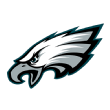
Philadelphia Eagles
Wide receiver
There were 93 wide receivers last season who got the 50 targets needed to qualify for Football Outsiders' wide receiver stat tables. Only two teams failed to produce a single wideout who finished with positive DYAR in those tables: the 49ers and Eagles. At least San Francisco's receivers can blame some of their struggles on a terrible quarterback (or two). The Eagles' receivers have no such excuse, unless you believe the team wasted the second overall pick in last year's draft on QB Carson Wentz.
Fortunately for Philadelphia, their receivers are young. Jordan Matthews will be just 25 this year, and Dorial Green-Beckham and Nelson Agholor are even younger than that. All three were drafted in the first or second round, and there is still time for one or all of them to fulfill that potential. With that in mind, the Eagles might best be served by adding a veteran target for Wentz, rather than spending another early pick on a receiver. They don't have a ton of cap space -- just $8.6 million -- but a cheaper option like Robert Woods might be a big addition that would fit in their budget. -- Vincent Verhei

Washington Redskins
Defensive line
Washington's defensive front was often overwhelmed in 2016. It was a big reason the team finished 25th in defensive DVOA, 24th against the pass and 25th against the run. Washington struggled with all areas of run defense, ranking 25th or worse in adjusted line yards, short-yardage runs, stuff rate and second-level yards. Now, three of their top four defensive linemen are about to be free agents. Chris Baker and Ziggy Hood combined for 30 starts and more than 1,400 snaps last season, with Cullen Jenkins adding 308 snaps off the bench. All will be on the open market shortly.
After franchising Kirk Cousins, will the Redskins have money left over to go after big free-agent targets such as Calais Campbell or Dontari Poe? Will they choose to re-sign their own free agents? Or will they try to rebuild through the draft, where they have 10 picks? It's hard to say. -- Vincent Verhei
NFC NORTH
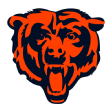
Chicago Bears
Quarterback
It feels as if Jay Cutler has been on his way out of Chicago for the past three seasons, but reports out of the Windy City say that the long-awaited release is actually happening this time. Cutler is scheduled to count $16 million against the cap in 2017, and cutting him would save the Bears $14 million. Cutler has always received more than his fair share of blame for Chicago's offensive struggles, but that comes with the territory when you sign a $126.7 million contract and then go 12-23 as a starter. Cutler had an above-average DVOA only twice in eight seasons in Chicago (in 2013 and 2015). He probably still has some value as a starting quarterback in the NFL, but it's best for all involved that his time in Chicago comes to an end.
Of course, part of getting rid of a longtime starting quarterback and beginning a rebuild is figuring out who's up next under center. Journeyman Brian Hoyer started five games for the Bears and put up a DVOA of 19.5 percent, but he's a free agent as well. So are Matt Barkley, who started six games this season, and developmental project David Fales, a sixth-round pick out of San Jose State in 2014 with five career pass attempts to his credit. Cutting Cutler would leave Connor Shaw as the only quarterback on the roster. It's safe to say that none of these options are likely to be the Bears' quarterback of the future. -- Bryan Knowles
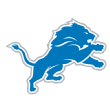
Detroit Lions
Defensive line
Back in 2014, the Detroit Lions had arguably the most dominant pair of defensive tackles in the league in Ndamukong Suh and Nick Fairley. Both left as free agents, however, and the Lions have never really replaced them. Detroit ranked dead last in defensive DVOA last season, and a lot of that can be blamed on a lack of pressure up front. Detroit ranked last in pressure rate, according to ESPN Stats & Information, and particularly struggled generating any heat up the gut. The Lions were slightly better against the run, ranking 21st in adjusted line yards, but they finished 31st on short-yardage runs and allowed 608 rushing yards in their last four games, all of them losses.
An addition anywhere on the defensive line would help with these issues, but let's focus on the two tackle positions in the middle. The Lions have only two players under contract for next season at the position. At age 33, Haloti Ngata is still serviceable in run defense, but he's not the same player who made back-to-back All-Pro teams in Baltimore. Ngata's days as a full-time starting tackle should really be behind him at this point. A'Shawn Robinson was a second-round rookie who improved as the season went on, starting five of the last six games. Although he's still developing and needs to improve his performance in the running game, he was the Lions' best tackle last season and should be penciled in as a starter in 2017.
That's it, though. Tyrunn Walker, Stefan Charles and Khyri Thornton are free agents, and none of them were very effective in 2016 anyway. Even if the Lions do re-sign one or two of them for depth, they could use a young, athletic 3-technique to pair with Robinson for the future, allowing Ngata to slip into a more comfortable rotational role. It's a position they might address both in free agency and the draft as they begin to rebuild the defense. -- Bryan Knowles
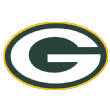
Green Bay Packers
Cornerback
The Packers struggled mightily in coverage last season. Sam Shields suffered a concussion in Week 1 and missed the rest of the season; Green Bay has since released the veteran. Neither Damarious Randall nor Quinten Rollins really played up to expectations in their second seasons. Rollins had the third-worst success rate among qualified cornerbacks in our charting at just 36 percent, and Randall turned in a sub-50-percent season as well. Both players missed time because of groin injuries throughout the regular season, and neither was at full strength during the playoffs. The injuries and ineffectiveness forced LaDarius Gunter into the spotlight. He had a solid season for an ex-undrafted free agent who played all of eight defensive snaps in 2015, but he doesn't look like a long-term starter.
Essentially, the unexpected loss of Shields forced everyone else on the roster into a role for which they were not quite ready, and the end result was a porous secondary. Green Bay finished 31st in DVOA covering wide receivers, giving up the second-most passing yards and the fourth-most passing plays of 15 yards or more in the NFL last season. Dez Bryant and Julio Jones both burned Green Bay's defense, leading to a stretch where the Packers gave up eight touchdowns in 12 possessions to end their season.
It's worth noting that both Randall and Rollins played better as rookies in 2015, and there is a reason they were drafted in the first and second round, respectively. Still, entering next season with Randall and Rollins as the top two cornerbacks should make Packers fans nervous. -- Bryan Knowles
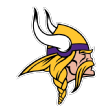
Minnesota Vikings
Offensive tackle
Pick almost any position on the offensive line, and you'll find a problem in Minnesota. The Vikings ranked 30th in adjusted line yards, and they weren't much better in pass protection, with opposing teams often finding ways to get pressure with three-man rushes. You can argue whether it was the worst line in football, but at least teams like the Seahawks had the excuse of trying to build an O-line on the cheap. The Vikings allocated $32.8 million of the cap to the offensive line in 2016, third most in the league, and got nothing in return. Injuries certainly didn't help, but the expected starters played poorly to begin with. When those starters started going down, their backups redefined poor play.
Guard Alex Boone is the only lineman under contract who leaves the season with his reputation intact. Joe Berger was very good at both center and guard, but he's a free agent who's turning 35 this offseason. After that, things get nasty. Matt Kalil started out poorly, and then went on IR because of a torn meniscus. His replacement, T.J. Clemmings, led the league with 30 blown blocks, according to Sports Info Solutions charting. Andre Smith was a bust as a free-agent acquisition, and when he went on IR, Jeremiah Sirles wasn't much of an improvement. Brandon Fusco struggled mightily at right guard, especially in pass protection. Jake Long was added in the bye week and forced into action too early, and then injured his Achilles before he could jell with his teammates. Nick Easton underwhelmed when he was forced into the starting lineup late in the season. Mike Harris missed the season because of a mystery illness. It was a nightmare all around. All in all, the Vikings started nine players on the offensive line in 2016.
The Vikings already have started cleaning house, releasing Fusco and Harris. Both Kalil and Smith are free agents, and seem unlikely to be re-signed -- which leaves Boone as the only opening-day starter from last season under contract. Boone has some experience playing left tackle in college, and serving as an injury replacement when needed in San Francisco. With the free-agent pool looking deeper -- and cheaper -- at guard than tackle, kicking Boone to the outside might be the best first step the Vikings can take to patch up their line. -- Bryan Knowles
NFC SOUTH
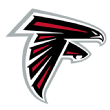
Atlanta Falcons
Guard
Finding a significant hole on the Falcons' roster is tricky. Our numbers had the defense pegged just 27th in the league, which is certainly a weakness, but that doesn't necessarily make it a hole. Starters at most positions are young and widely expected to carry over late-season improvement into 2017. Nothing is guaranteed in the NFL, but it seems reasonable to expect that the return of top cornerback Desmond Trufant, coupled with improvement from the youth around him, would allow the Falcons to field a better defense without making significant changes to personnel. Depth is a potential issue, and the pass rush could stand to be upgraded (Dwight Freeney is a free agent), but there's nary a team in the league for whom neither of those statements is true.
The opposite is true of the offense. Despite being comfortably the best in the league in 2016, the unit has one clear weakness. Right guard Chris Chester is probably the worst starter on the Falcons' offense, and Sports Info Solutions charting ranked him fourth among NFL guards in blown blocks. He is also 34 years old, making him the oldest regular starter on the team, and a free agent. The team reportedly intends to bring him back, but there is no shortage of available alternatives should they decide to move on. Though this draft is generally expected to be a poor one for offensive linemen, an unusually large number of established guards are expected to hit the free-agent market this week, and a number of them would be younger upgrades. -- Andrew Potter
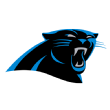
Carolina Panthers
Offensive tackle
This is what we listed as Carolina's biggest hole in the 2014 offseason. And the 2015 offseason. And the 2016 offseason. Michael Oher is an adequate NFL right tackle and Mike Remmers is a capable backup, but neither will be confused for former Panthers great Jordan Gross. Which is a pity, because both have been asked to man his old position since Gross retired in 2014. Despite a Super Bowl appearance at the end of the 2015 season, it generally hasn't gone well.
Remmers is the worse of the two holdovers; Sports Info Solutions charting data "credits" him with the fourth-most blown blocks in the league. In addition, he was called for 15 penalties (11 accepted, two declined, two offsetting), including nine holding calls and four false starts. On one glorious play against Minnesota in Week 3, Remmers was called for holding and Cam Newton still got sacked because of pressure from Remmers' side. Finding a competent left tackle would really upgrade two spots at once, because it would allow Oher to move to right tackle and move Remmers out of the lineup altogether. -- Andrew Potter
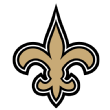
New Orleans Saints
Linebacker
Cameron Jordan could certainly use some help on the pass rush, but linebacker might be an even bigger problem, with Craig Robertson the only constant in the middle of the defense. Dannell Ellerbe showed flashes of his old self, contributing four sacks in eight starts, but he yet again battled injuries throughout the season. That has been a feature of his time in New Orleans: Ellerbe has managed only 12 starts in two seasons, and is now on the wrong side of 30.
The other linebackers were special teams stalwart Nate Stupar, who was competent when called upon to start, plus disappointing youngster Stephone Anthony and aging veteran James Laurinaitis, who were very much not. Linebacker is a major hole for the Saints, particularly in coverage, as evidenced by the team's league-worst 44.8 percent DVOA on passes to running backs. That's a bit of a problem when you consider the backs they must face, including Devonta Freeman, Tevin Coleman and Charles Sims. -- Andrew Potter
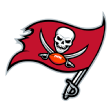
Tampa Bay Buccaneers
Safety
Tampa Bay's pass defense ranked a surprising sixth by DVOA in 2016, but safety was the obvious weak spot for an otherwise very good unit. The good news is that Keith Tandy finally supplanted subpar veteran Chris Conte in the starting lineup for the final five games of 2016. The bad news is that Tandy is the only safety the Buccaneers currently have signed through 2017 who has any starting experience at all. Bradley McDougald, who started all 16 games last season and 15 the season before, is an unrestricted free agent. Conte, who started 24 games over the same period, is also a free agent and unlikely to return. The only other safety on this season's roster to have started even one game for the Buccaneers, Major Wright, was released in December and not re-signed.
That it took Tandy two years to oust Conte -- after he spent his first three seasons backing up Mark Barron and Dashon Goldson -- tells us that he probably isn't the long-term answer at either safety spot. Tandy might, however, get first crack at a starting job over the summer, depending on what happens in the draft and free agency. McDougald is widely expected to be re-signed by the Buccaneers but as an unrestricted free agent that's far from guaranteed. Fortunately, he isn't likely to be in huge demand, which means returning to Tampa Bay probably makes sense for both the player and the team. A starting tandem of McDougald and Tandy wouldn't be the worst outcome in the world for the Buccaneers, but it would still leave the safety spot as probably the weakest point on their defense. Alternatively, the Buccaneers could look to free agency for an upgrade. Tony Jefferson would provide exactly what Conte didn't as a deep safety: range and ball skills. -- Andrew Potter
NFC WEST
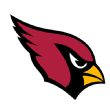
Arizona Cardinals
Special teams
Carson Palmer's play dropped off in 2016 from his MVP-worthy 2015 season, but he was nowhere near as bad as the Cardinals' special teams this past season. Arizona finished 30th in overall special teams DVOA, 31st in weighted DVOA, 29th in field goals/extra points, 31st in punt returns and 26th in punting. All told, that's a mess. Special teams can make a big difference along the margins, and that might have cost the Cardinals a shot at the playoffs in 2016.
Consider that Arizona finished 7-8-1, but based on points scored and points allowed they had 9.4 Pythagorean wins (explained here). Chandler Catanzaro had a chance to win games with field goals against the Patriots and the Seahawks at home, but he missed both, leading to a loss to the Brady-less Patriots and a tie against a Seattle team that couldn't do anything on offense for essentially the entire game. A blocked punt late in the fourth quarter of the Seattle game led to a field goal that both tied the score at 3-3 and served as the entirety of Seattle's offensive production in regulation. The Cardinals need to bring in camp competition for kicker Catanzaro, stop churning through mediocre punters, and acknowledge that Patrick Peterson hasn't been strong on punt returns since his rookie season. -- Carl Yoder

Los Angeles Rams
Wide receiver
Jared Goff was the worst starting quarterback in the league last year according to both QBR and DVOA, but that doesn't mean quarterback is a hole for this team. The Rams invested the No. 1 overall pick in Goff, and they're going to try to develop him. It would help if maybe he had some guys to throw to. Last year's top two receivers in terms of yardage, Kenny Britt and Brian Quick, are both free agents. Furthermore, the Rams need to be honest with themselves that Tavon Austin is never going to develop into more than a gimmick player who can't average more than 10 yards per reception. After Austin, the Rams have two 2016 draft picks -- Pharoh Cooper (fourth round) and Michael Thomas (sixth round) -- and special teams gunner Bradley Marquez. Look for the Rams to bring in multiple fresh faces at receiver via free agency and the draft. -- Carl Yoder
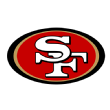
San Francisco 49ers
Quarterback
The 49ers won't have a single quarterback on the roster when the new league year begins. Colin Kaepernick has opted out of his contract. Blaine Gabbert, Christian Ponder and Thaddeus Lewis will all be free agents. New head coach Kyle Shanahan can start from scratch with a quarterback he wants to mold. However, unless the 49ers can wow Washington or New England with a trade package to get Kirk Cousins or Jimmy Garoppolo, the quarterbacks Shanahan will get to mold will either be pedestrian veteran free agents or 2017 draft selections. -- Carl Yoder
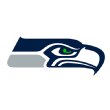
Seattle Seahawks
Offensive line
Seattle's offensive line finished 26th in adjusted line yards and 25th in adjusted sack rate; its average rank of 25.5 between the two statistics was the worst of any playoff team this season (next worst was Detroit at 24.5). Per OverTheCap.com, the Seahawks committed only 4.15 percent of their salary cap to offensive linemen, the smallest percentage in the league.
That lack of investment certainly translated into a lack of results on the field. In addition to the poor numbers on the offensive line, Russell Wilson suffered multiple significant injuries, which clearly limited his mobility. At least center Justin Britt served as a relative bright spot for the team in his first year as the Seahawks' starter at the position.
Seattle is hoping for natural development from this very young unit next season. Their starting line for the divisional-round game against Atlanta consisted of two rookies, one second-year player and two third-year players. But that possibility for internal growth shouldn't preclude the team from looking to address the offensive line in the draft or free agency. -- Carl Yoder
